Table of Contents
Our Universe: A 13.7 Billion Years Old Journey
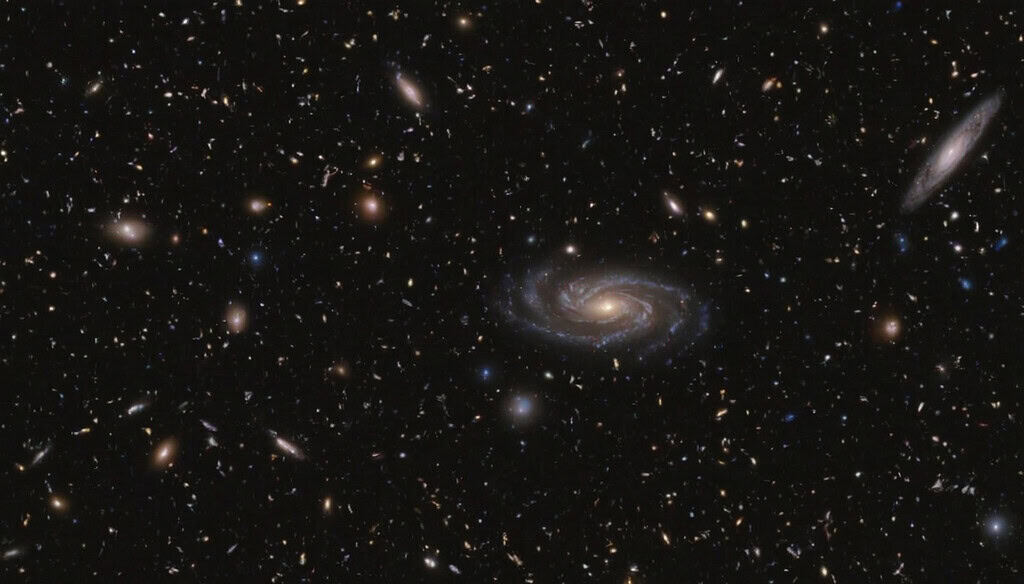
The universe, at approximately 13.7 billion years old, has undergone an incredible journey of expansion, transformation, and complexity. From its explosive birth in the Big Bang to the intricate cosmic structures we observe today, it has been shaped by various powerful forces and entities. These forces have not only defined the universe’s current form but will continue to influence its future trajectory.
In the earliest moments after the Big Bang, the universe was a hot, dense state where matter and energy were inextricably intertwined. Over time, as space expanded, cooling allowed for the formation of elementary particles, atoms, and eventually the first stars and galaxies. This early evolution set the stage for the vast array of cosmic phenomena that followed.
One of the most influential forces in shaping the universe’s structure is gravity. It has governed the formation of stars, galaxies, and even the largest cosmic structures, such as superclusters and filaments. Gravity’s pull has caused matter to clump together, creating everything from small planetary systems to supermassive black holes at the centers of galaxies. Its reach is vast, influencing everything from the motions of individual stars to the growth of galaxy clusters.
Alongside gravity, other forces, such as dark energy and dark matter, have played critical roles in the universe’s evolution. Dark energy, which makes up around 68% of the universe, drives its accelerating expansion. Dark matter, though invisible, exerts gravitational influence and has helped to organize galaxies and large-scale cosmic structures. The interaction between these unseen forces and the more familiar matter-driven dynamics continues to be a source of profound scientific inquiry.
Moreover, the universe’s future will be shaped by these forces. Dark energy, in particular, poses questions about the ultimate fate of the universe. Will its continued influence lead to an eternal expansion, or will gravity eventually overpower it, bringing about a cosmic collapse? The behavior of dark matter and the formation of new cosmic structures will also play a critical role in determining how the universe continues to evolve over billions of years.
The entities that have shaped the universe so far, from the formation of galaxies to the interactions of fundamental particles, are only part of the story. As we continue to explore and study the cosmos, the intricate relationship between these forces will remain central to understanding the universe’s past, present, and future.
In this article, we will talk about 10 of the most powerful and important forces and entities that have shaped the structure and the fate of our Universe.
1. Big Bang

The Big Bang is basically the starting point for everything we see in the universe today. It happened around 13.7 billion years ago when the universe popped out from a super hot, dense spot. A lot of people picture it as a regular explosion, but it was actually the space itself that expanded really fast, taking all the matter and energy along for the ride.
In the very first moments after the Big Bang, the universe was a chaotic mix of energy filled with fundamental particles bouncing around in intense radiation. This time is called the Planck era, and it’s when our current physics theories start to get a bit shaky. Soon after, the universe moved into a phase known as quark-gluon plasma, where particles like quarks and gluons were the main players. As things cooled down, quarks teamed up to create protons and neutrons, which are what atoms are made of.
Then came nucleosynthesis, which took place just a few minutes after the Big Bang and was crucial for determining what the universe would be made of. During this period, light elements like hydrogen, helium, and a bit of lithium were created. These components eventually turned into the foundation for stars and galaxies.
The light from the Big Bang, called cosmic microwave background radiation, gives us a peek into the universe’s early days. Discovered in the 20th century, this radiation is like the “afterglow” of the universe’s hot and dense start. Its almost even spread across the sky, with tiny variations, shows the initial density differences that eventually led to the formation of galaxies and other cosmic structures.
As the universe grew, gravity started pulling matter together, paving the way for stars, galaxies, and bigger formations to come into existence. The Big Bang wasn’t just a one-time event way back when; its impact is still felt all over the cosmos, shaping how everything we see behaves and is structured. It set up the basic rules of the universe and created the right conditions for complexity and life to emerge.
2. Gravity

Gravity, the invisible force that pulls objects toward one another, is one of the most fundamental influences shaping the universe. It governs the formation and evolution of stars, planets, galaxies, and even the large-scale structure of the cosmos. Though it is the weakest of the four fundamental forces, its long-range effects make it the dominant player on cosmic scales.
Gravity’s role in shaping the universe began immediately after the Big Bang. As the universe expanded and cooled, slight variations in the density of matter created gravitational wells. These wells caused matter to clump together, eventually forming stars, galaxies, and clusters of galaxies. Without gravity, the universe would lack the complex structures we observe today; matter would remain a diffuse, evenly spread cloud with no stars or planets to support life.
Stars themselves owe their existence to gravity. Clouds of gas and dust collapse under their own gravitational pull, initiating nuclear fusion at their cores. This process not only generates the light and heat emitted by stars but also leads to the creation of heavier elements essential for life, such as carbon and oxygen. Similarly, the formation of galaxies—vast systems of stars bound by gravity—is another testament to this force’s influence. Over billions of years, gravitational interactions have shaped galaxies into a variety of forms, from elegant spirals to massive elliptical structures.
Gravity’s effects extend to the largest scales of the universe. It governs the motion of galaxy clusters, the distribution of dark matter, and even the expansion of space itself. Gravitational lensing, a phenomenon predicted by Einstein’s theory of general relativity, demonstrates how massive objects can bend light, providing a powerful tool for studying distant galaxies and dark matter distributions.
Black holes represent one of gravity’s most extreme manifestations. These objects form when massive stars collapse under their own gravitational pull, creating regions of space where gravity is so intense that nothing, not even light, can escape. Black holes influence their surroundings by altering the orbits of nearby stars and capturing gas and matter that falls within their event horizons. Supermassive black holes, located at the cores of the majority of galaxies, are believed to be instrumental in governing the processes of galaxy formation and evolution.
Despite its pervasive influence, gravity remains a subject of ongoing study, especially in relation to its integration with quantum mechanics. Efforts to develop a unified theory that combines gravity with the other fundamental forces continue to challenge physicists. Gravity is, nonetheless, essential for comprehending the universe’s history, current state, and future trajectory.
3. Dark Energy

Dark energy is an enigmatic force that is reshaping our understanding of the universe. It is believed to be responsible for the accelerated expansion of the cosmos, a discovery that fundamentally altered the way scientists view the universe’s evolution and fate. Although it accounts for nearly 68% of the universe’s total energy content, dark energy remains one of the greatest mysteries in cosmology.
The concept of dark energy emerged in the late 20th century when astronomers observed distant supernovae and discovered that the universe’s expansion was speeding up rather than slowing down. This acceleration cannot be accounted for solely by the gravitational influences of either visible matter or dark matter. To account for this unexpected phenomenon, scientists proposed the existence of a new form of energy with repulsive gravitational properties—dark energy.
One leading explanation for dark energy is the cosmological constant, a term introduced by Albert Einstein in his equations of general relativity. Initially added to explain a static universe, Einstein later abandoned it when evidence showed the universe was expanding. However, the cosmological constant was revived as a possible explanation for the accelerating expansion, suggesting that dark energy is a property of space itself. As space expands, more dark energy comes into existence, driving the acceleration further.
Another possibility is that dark energy represents a dynamic field, often referred to as quintessence, whose properties evolve over time. This idea opens up intriguing possibilities about the changing nature of dark energy and its impact on the universe’s future.
Dark energy’s influence extends to the large-scale structure of the universe. By accelerating expansion, it counters the effects of gravity, preventing galaxies and clusters from clumping together indefinitely. This tug-of-war between gravity and dark energy will ultimately determine the fate of the cosmos. If dark energy continues to dominate, the universe may expand forever in a “Big Freeze,” where galaxies drift apart, and stars eventually burn out. Alternatively, if dark energy weakens or reverses, the universe could undergo a “Big Crunch,” collapsing back into a singularity.
Despite its profound implications, dark energy remains poorly understood, with its nature and origin among the most significant questions in modern physics. Ongoing observations and experiments, such as those studying the cosmic microwave background and galaxy distributions, aim to shed light on this mysterious force that is reshaping the universe.
4. Dark Matter
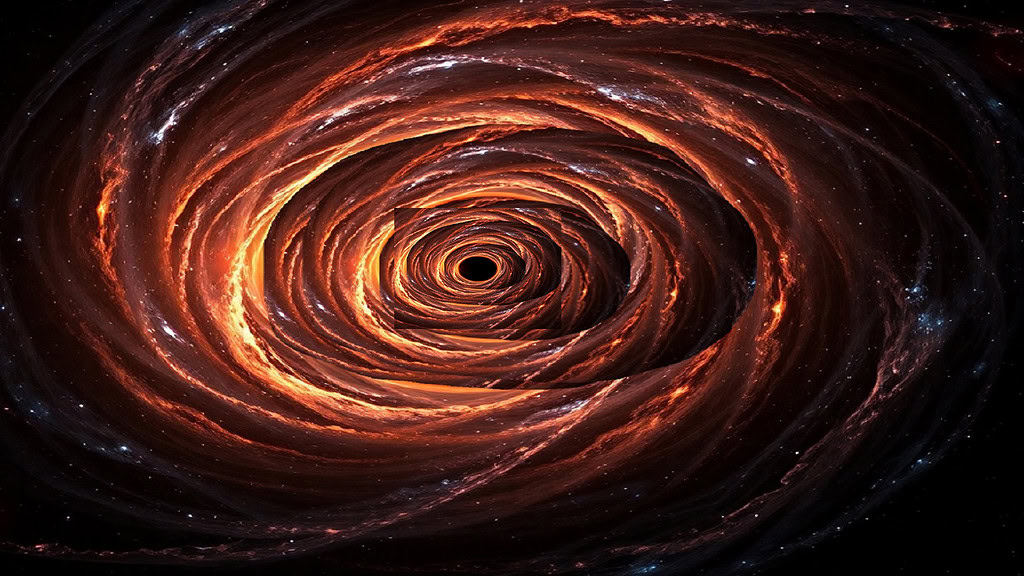
Dark matter is one of the most critical yet elusive components of the universe, making up about 27% of its total mass-energy content. Though it cannot be observed directly, its gravitational effects are essential for understanding the formation and behavior of galaxies and large-scale cosmic structures. Without dark matter, the universe’s current form would not exist.
The evidence for dark matter first emerged in the early 20th century when astronomers noticed discrepancies in the motion of galaxies within clusters. These galaxies were moving faster than could be accounted for by the visible matter alone, suggesting the presence of unseen mass exerting gravitational influence. This mysterious matter, which does not emit, absorb, or reflect light, became known as dark matter.
Dark matter is essential in determining the structure of the universe. In the universe’s formative years, its gravitational attraction led to the aggregation of ordinary matter, which ultimately resulted in the formation of galaxies and galaxy clusters. Numerous simulations of cosmic evolution indicate that dark matter is crucial for accurately reflecting the current distribution of galaxies. Its impact reaches the most extensive structures in the universe, including cosmic filaments and voids, which outline the foundational framework established by dark matter.
Despite its significance, the exact nature of dark matter remains unknown. Various theories suggest it could consist of exotic particles that do not interact with ordinary matter except through gravity. Weakly Interacting Massive Particles (WIMPs) and axions are among the leading candidates, though direct detection efforts have yet to yield conclusive results.
Dark matter also plays a critical role in the behavior of galaxies. Observations of rotation curves—graphs showing how stars orbit within galaxies—reveal that stars at the outer edges of galaxies move much faster than expected. This behavior indicates the presence of a dark matter halo surrounding galaxies, providing the extra mass needed to maintain their observed dynamics.
Efforts to understand dark matter involve a combination of observational astronomy, particle physics, and theoretical modeling. Experiments such as those conducted in underground detectors or at particle accelerators aim to directly detect dark matter particles. Observations of gravitational lensing, where light from distant objects is bent by dark matter’s gravitational pull, offer indirect insights into its distribution and properties.
Dark matter remains a profound mystery, central to our understanding of the universe. As research continues, unraveling its secrets promises to unlock deeper insights into the cosmos, from its earliest moments to its ultimate fate.
5. Stars and Supernova

Stars are among the most transformative entities in the universe, acting as the building blocks for much of its observable structure and chemistry. Formed from collapsing clouds of gas and dust, stars initiate nuclear fusion in their cores, converting lighter elements like hydrogen into heavier ones such as helium, carbon, and oxygen. This process generates immense amounts of energy, which radiates as light and heat, fueling the universe’s dynamic nature and supporting the development of planetary systems.
The life cycle of a star is primarily influenced by its mass. Stars similar in size to the Sun can exist for billions of years, consistently fusing hydrogen in their cores. In contrast, more massive stars experience shorter lifespans as they quickly deplete their nuclear fuel. These larger stars are especially noteworthy due to their dramatic endings, referred to as supernovae. A supernova takes place when a massive star has exhausted its nuclear fuel, leading to the collapse of its core under gravitational forces. This collapse initiates a tremendous explosion that propels the star’s outer layers into the cosmos.
Supernova play a crucial role in enriching the universe with heavier elements, such as iron and gold, which are forged during the explosion. These elements are scattered into interstellar space, where they become part of new star systems, planets, and, ultimately, life itself. The debris fields from supernovae, such as the famous Crab Nebula, serve as cradles for the next generation of stars, demonstrating how the cycle of stellar birth and death drives cosmic evolution.
Moreover, the shockwaves from supernova compress surrounding gas clouds, triggering the formation of new stars. This interplay between destruction and creation underscores the role of stars and supernova in shaping galaxies and maintaining the dynamic balance of the universe. Supernova also serve as vital tools for astronomers; their brightness allows for the measurement of cosmic distances, helping to map the expansion of the universe.
Stars, through their lifetimes and explosive ends, profoundly influence the structure and chemistry of the cosmos. They are fundamental to the creation of complex elements and the ongoing cycles of formation and destruction that define the universe’s evolution.
6. Black Holes
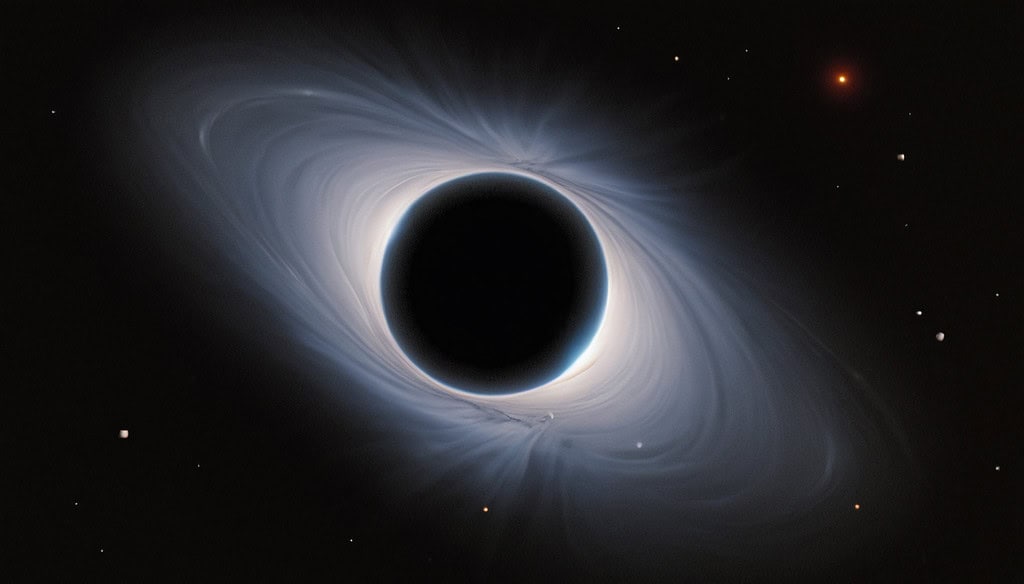
Black holes are among the most mysterious and formidable phenomena in the universe, epitomizing the supreme dominance of gravitational forces. These entities arise when massive stars undergo a collapse due to their own gravitational pull after depleting their nuclear fuel. Consequently, a region of space is created where the gravitational force is so overwhelming that not even light can escape, rendering black holes imperceptible to direct observation.
Despite their elusive nature, black holes exert a profound influence on their surroundings. Stellar-mass black holes, which form from individual stars, are often found in binary systems, where they pull matter from a companion star. This accreted matter forms a hot, spinning disk around the black hole, emitting intense radiation as it spirals inward. These emissions allow astronomers to infer the presence of a black hole even when it cannot be observed directly.
Supermassive black holes, found at the centers of most galaxies, including our Milky Way, have masses millions to billions of times that of the sun. These colossal entities are thought to play a critical role in regulating galaxy formation and evolution. For instance, the energy released by material falling into a supermassive black hole can drive powerful jets of particles that shape the distribution of gas and stars within a galaxy. This feedback mechanism helps to balance the processes of star formation and galactic growth.
Black holes also test the limits of our understanding of physics. At their cores lies a singularity, a point of infinite density where the known laws of physics break down. This singularity is surrounded by the event horizon, a boundary beyond which nothing can escape. Exploring the behavior of matter and energy near black holes provides valuable insights into the interplay between gravity and quantum mechanics, which remains one of the greatest challenges in modern science.
Gravitational waves, ripples in space-time caused by the collision of massive black holes, have opened a new window for studying these objects. Detected by observatories like LIGO and Virgo, these waves offer direct evidence of black hole mergers and provide a means of exploring the universe in ways previously unimaginable.
Black holes, despite their invisibility, are key players in the cosmic drama. Their influence extends across vast distances, shaping galaxies, testing our understanding of fundamental physics, and inspiring ongoing research into the mysteries of the universe.
7. Cosmic Inflation
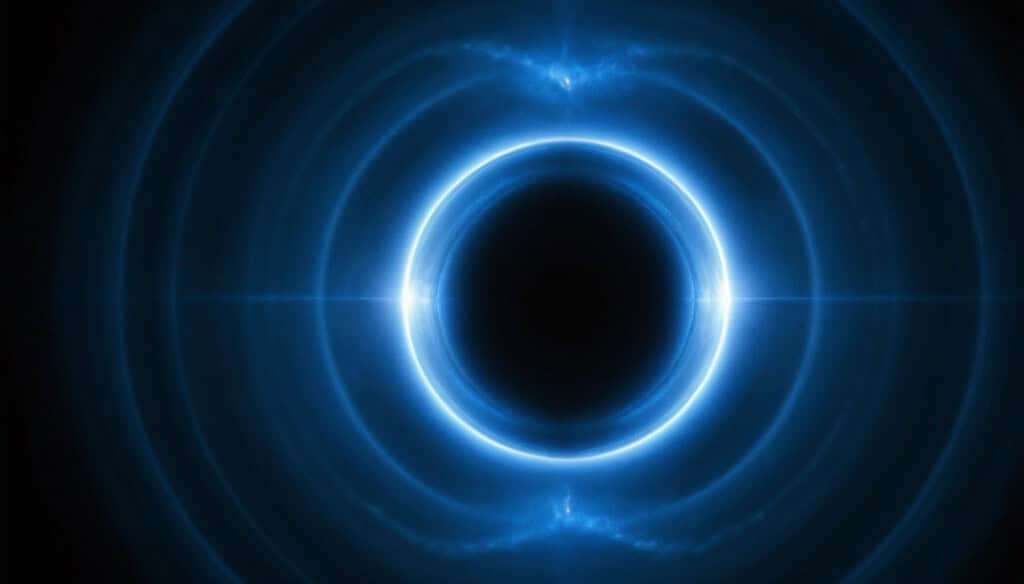
Cosmic inflation is a theoretical framework that describes a brief, explosive expansion of the universe in its earliest moments. This period, occurring less than a fraction of a second after the Big Bang, saw the universe expand exponentially, growing from a minuscule size to something on a macroscopic scale. While the concept of inflation remains a hypothesis, it addresses several key questions about the structure and evolution of the universe.
One of the main problems inflation solves is the horizon problem. Observations of the cosmic microwave background radiation reveal that regions of the universe, separated by vast distances, have nearly identical temperatures. Without inflation, these regions would not have had enough time to exchange energy and equalize their temperatures. Inflation provides a solution by suggesting that these regions were once in close proximity before the rapid expansion spread them far apart.
Inflation also explains the flatness problem, which refers to the universe’s near-perfect geometric flatness. Without inflation, even slight deviations from flatness in the early universe would have been amplified over time, leading to a highly curved universe. The rapid expansion during inflation smoothed out any curvature, resulting in the flatness observed today.
Another significant contribution of inflation is its role in generating the seeds of cosmic structure. Quantum fluctuations—tiny, random variations in energy at the smallest scales—were stretched to macroscopic sizes during inflation. These fluctuations became the density variations that eventually grew into galaxies, clusters, and superclusters. Thus, inflation provides a mechanism for linking the quantum realm to the vast cosmic structures we see today.
Although inflation has strong theoretical support, direct evidence for this phenomenon remains elusive. Observational data, such as patterns in the cosmic microwave background, offer indirect support for inflationary models. Efforts to detect primordial gravitational waves, which would be a smoking gun for inflation, continue to be a major focus of cosmological research.
Cosmic inflation, while still theoretical, provides a compelling framework for understanding the early universe. It connects the micro and macro scales of the cosmos and offers insights into how the universe’s large-scale structure emerged from its chaotic beginnings.
8. Quantum Fluctuations

Quantum fluctuations, intrinsic to the fabric of space-time, are random changes in energy that occur at the smallest scales. They are a natural consequence of quantum mechanics, which states that particles and energy cannot be fixed in precise states but instead fluctuate unpredictably. These minute disturbances played a pivotal role in shaping the universe’s large-scale structure.
During the universe’s infancy, it was dominated by quantum-scale phenomena. Quantum fluctuations arose as tiny variations in density and energy within the chaotic early universe. These fluctuations were insignificant in scale, but during cosmic inflation, they were stretched dramatically, growing to macroscopic sizes. As the universe expanded and cooled, these stretched fluctuations became the seeds for the formation of galaxies and cosmic structures.
The imprints of these fluctuations are visible in the cosmic microwave background radiation, which shows slight variations in temperature and density. These variations directly correspond to the regions of higher and lower density that later developed into galaxies, clusters, and vast cosmic filaments. In this way, quantum fluctuations connect the unpredictable world of quantum mechanics to the structured, observable universe.
Quantum fluctuations underscore the inherently probabilistic character of the universe. In contrast to classical physics, which is characterized by deterministic outcomes, quantum mechanics functions on the basis of probabilities. This intrinsic uncertainty is essential to the behavior of particles and energy, contributing to the vast array of structures present in the universe. Absent these fluctuations, the universe would likely be devoid of the intricate variety of galaxies, stars, and other celestial formations that we observe today.
Moreover, quantum fluctuations bear significant implications for the future of cosmology. They play a crucial role in elucidating the relationship between quantum mechanics and general relativity, two theoretical frameworks that often exhibit incompatibilities. The pursuit of a unified theory that reconciles both could provide profound insights into the nature of space-time and the origins of the universe.
Quantum fluctuations, while minute in origin, have had an outsized impact on the cosmos. They demonstrate how the smallest scales of reality can influence the largest, bridging the gap between quantum mechanics and cosmological evolution. Through these fluctuations, the universe’s chaotic beginnings were translated into the intricate structures that define its current form.
9. Galaxies

Galaxies are monumental in shaping the universe, serving as the central units that organize its visible matter. These vast assemblages of stars, planets, gas, dust, and dark matter have profoundly influenced the structure of the cosmos and will continue to do so. Galaxies are not isolated; their interactions, movements, and evolutions are deeply entwined with the universe’s past, present, and future.
The formation of galaxies began shortly after the Big Bang. Slight density variations in the primordial universe provided the seeds for gravity to pull matter together. Over time, these regions grew into galaxies, which acted as cradles for star formation. Stars formed in their billions, creating the luminous frameworks that now dominate the night sky. The clustering of galaxies into groups, filaments, and superclusters created the intricate web that defines the universe’s large-scale structure.
Gravity plays a pivotal role within galaxies, binding their elements together and dictating their shapes and behaviors. Spiral galaxies, such as the Milky Way, are characterized by rotating disks and luminous arms filled with young stars and active star formation. Elliptical galaxies, often older and less dynamic, tend to have spheroidal shapes, hosting older stars. Irregular galaxies, meanwhile, are more chaotic in structure, shaped by collisions or gravitational influences. These different types reflect a galaxy’s history and the forces acting upon it over billions of years.
Interactions between galaxies profoundly affect the universe’s structure. When galaxies approach each other, their gravitational pull can distort their shapes, trigger intense star formation, and even lead to mergers. These mergers can create larger, more massive galaxies and contribute to the growth of supermassive black holes at their centers. Such interactions are not rare but are part of the natural evolutionary process, shaping the appearance and fate of galaxies.
Galaxies function as reservoirs of dark matter, an unseen substance that makes up the majority of their mass. The influence of dark matter is essential for comprehending the stability and rotation of galaxies. In the absence of the extra gravitational force exerted by dark matter, galaxies would not maintain their structural integrity. Additionally, dark matter plays a significant role in galaxy clustering, serving as a foundation for the cosmic web that extends throughout the universe.
The study of galaxies extends our understanding of the universe’s life cycle. Observing distant galaxies allows us to look back in time, unveiling the processes that governed their formation and evolution. These observations provide clues about the universe’s origins and potential future. As galaxies continue to evolve, merge, and interact, they will remain fundamental to shaping the universe’s destiny, determining the distribution of its matter and the pathways through which energy flows.
10. Space-Time
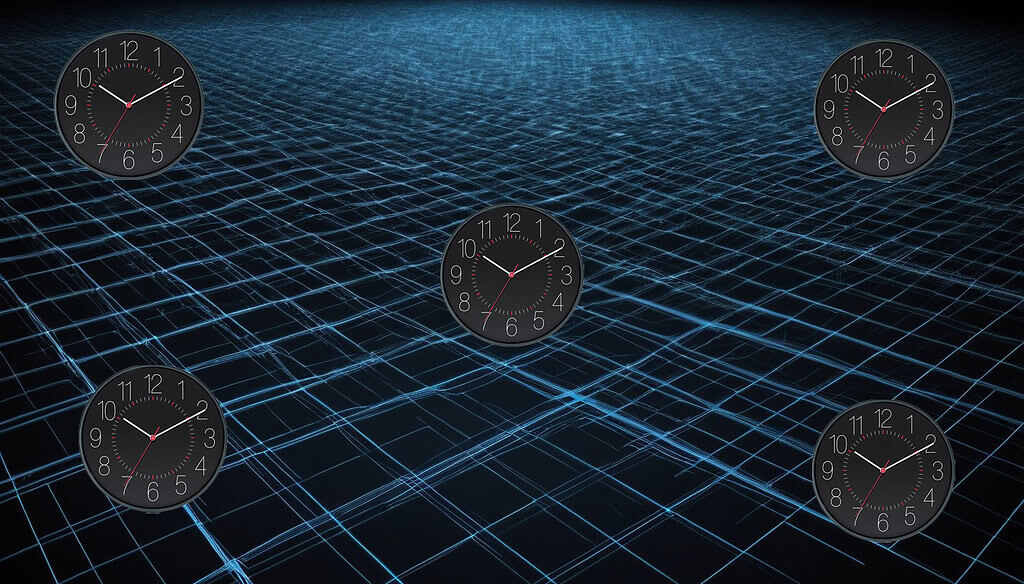
Space-time is the foundational framework of the universe, uniting the dimensions of space and time into a cohesive, dynamic entity. This concept, introduced through Einstein’s theory of general relativity, redefined our understanding of gravity and the cosmos. Space-time is not a passive stage upon which the universe unfolds; it is an active participant, influencing and being influenced by the matter and energy it encompasses.
Massive objects shape space-time, causing it to curve. This curvature is what we perceive as gravity, guiding the motion of planets, stars, and galaxies. Celestial bodies follow paths determined by this curvature, moving along trajectories shaped by the deformations in space-time. The Sun, for example, creates a curvature in space-time that holds the planets of the solar system in orbit. On much larger scales, galaxies move within the cosmic web, their paths influenced by the warping of space-time caused by immense concentrations of matter and dark energy.
The flexibility of space-time is evident in phenomena such as gravitational lensing. Massive objects like galaxies or clusters of galaxies bend the light from objects behind them, allowing astronomers to observe distant regions of the universe. This bending provides direct evidence of space-time’s curvature and helps map the distribution of dark matter. These observations reveal that space-time is not static but is constantly molded by the universe’s contents.
The expansion of the universe is another expression of space-time’s dynamic nature. Observations of distant galaxies have shown that the fabric of space-time is stretching, causing galaxies to move apart. This expansion, initially set in motion by cosmic inflation shortly after the Big Bang, is now driven by dark energy. The accelerating rate of expansion raises profound questions about the universe’s ultimate fate, as the stretching of space-time could eventually lead to a future where galaxies become so distant from one another that their light can no longer reach observers.
Space-time also governs the interplay between quantum mechanics and relativity, two fundamental theories of physics. Efforts to reconcile these frameworks have revealed the limitations of our understanding of space-time, particularly at microscopic scales. Quantum fluctuations, for instance, suggest that space-time itself might have a granular structure at the smallest levels, challenging the smooth, continuous view presented by general relativity.
On the largest scales, space-time is the scaffold upon which the universe’s structure is built. It supports the formation and evolution of the cosmic web, guiding the distribution of matter and the clustering of galaxies. The interplay between space-time, dark energy, and gravity defines the universe’s dynamics, shaping its past and determining its trajectory. As the universe continues to expand and evolve, space-time will remain a central element, dictating the flow of matter and energy and steering the cosmos toward its eventual fate.
Space-time’s significance lies not only in its current role but also in its potential for unlocking deeper truths about the universe. It connects phenomena as vast as galaxy clusters and as minute as quantum fluctuations, serving as a bridge between the cosmic and the subatomic. By studying its behavior and interactions, scientists hope to uncover the underlying principles governing the universe, offering a more profound understanding of existence itself.
Disclaimers: *This article is only for informational purposes.
**Do not make your important decisions solely based on the information provided in this article. Do your own research.
***Information in this article may vary or get updated in the future.
Read More Science and Space Articles
- Pomelo in Culture: 8 Heartwarming Ritual Traditions
- 8 Culinary Uses of Oranges That I Highly Recommend
- 8 Astounding Ways Lemons Have Helped Elevate My Mood
- 8 Irresistible Ericaceae Fruits (Heath Family) to Savor and Enjoy
- 8 Incredible and Healthy Cucurbitaceae Fruits to Enjoy
- Top 8 Delicious Anacardiaceae Fruits You Must Try
- 8 Incredible Musaceae Fruits You Need to Try Right Now
- 8 Incredible Vitaceae Fruits: Nature’s Tasty Treasures
- 8 Incredible Rosaceae Fruits You Need to Discover
- Discover 8 Fruit Families That Enrich Our Daily Diets
- 8 Non-CO₂ Greenhouse Gasses That Are Worst Than CO₂
- 8 Ways Water Crisis is Worsened by Global Climate Change
- 8 Amazing Ways Brain Anatomy is Altered by New Learning
- 8 Disastrous Ways Deforestation Destroys Biodiversity
- 8 Worst Ways Global Climate Change Hurts The Impoverished
- Danger Of Environmental Damage: 8 Ways A Person Can Help
- Eradication Of Poverty: 8 Critical Ways Science Helps
- Mathematics: 8 Interesting Ways To Become Efficient At It
- STEM Fields: 8 Important Reasons Why You Must Learn Them
- Making Your Kid Efficient At STEM Subjects: 8 Important Steps
- Becoming A NASA Aspirant: 8 Important Steps You Must Follow
- Top 8 Important Wellness Habits That You Must Follow
- Top 5 Amazing Whole Grains That Are Healthier Than Rice
- Indian Space Program: 8 Incredible Achievements
- Discoveries by JWST: 10 Incredible Findings of The Telescope
- NASA’s MOXIE Creates O2: Big Step Towards Mars Colonization
- Top 5 Amazing Properties of Time That Defy Common Sense
- 10 Factors for Emergence of Intelligent Life in The Universe
- Space Science: 6 Vital Reasons Why We Should Invest in It
- Solar System: 10 Astonishing Uniqueness of our star system
- Top 6 Solar System Objects That Might Destroy Life On Earth
- Certain End of The Universe: 4 Forces of Nature to Watch Out For
- Big Bang: An Incredible Start of Universe 14 Billion Years Ago




